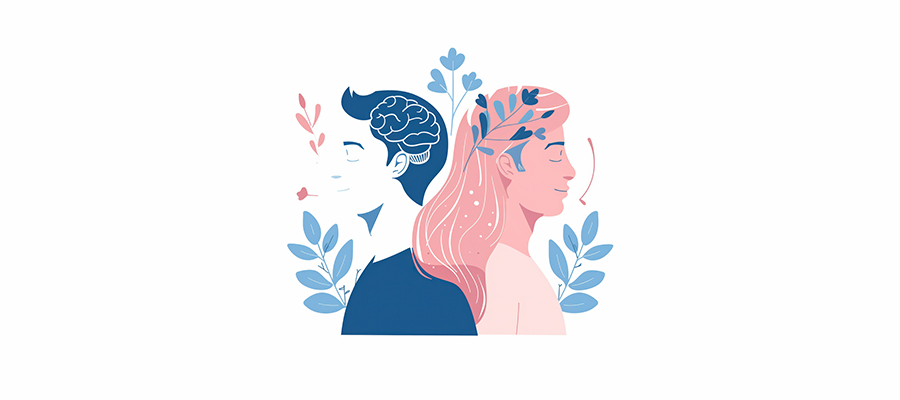I used to think therapy was for people who had it all figured out. You know, the kind of people who read self-help books, journal every morning, and have a favorite type of tea. I was not that person. I was the person who cried in the shower, avoided eye contact with strangers, and carried a low hum of anxiety in my chest like a second heartbeat. Therapy felt like something other people did people who were braver, more put together, or at least more willing to admit they needed help.
But then, life got heavy. The kind of heavy where you feel like you’re dragging yourself through each day, and even the smallest tasks sending an email, making a phone call, deciding what to eat feel like climbing a mountain. I realized I couldn’t keep going like this. So, I took a deep breath, found a therapist, and showed up to my first session with sweaty palms and a racing heart.
What I didn’t know then was that therapy wasn’t just about talking. It was about rewiring my brain. And over time, it changed everything.
The Brain on Overdrive
Before therapy, my brain felt like a broken record. The same thoughts would loop over and over: You’re not good enough. What if you mess up? Everyone’s judging you. It was exhausting, but I didn’t know how to make it stop. I didn’t realize that my brain was stuck in survival mode, constantly scanning for threats and reacting to them like my life depended on it.
Neuroscience calls this the amygdala hijack. The amygdala, the part of the brain that processes fear and emotions, was running the show. Meanwhile, the prefrontal cortex the part responsible for logic, reasoning, and decision-making was taking a backseat. This imbalance kept me trapped in cycles of anxiety, self-doubt, and avoidance.
Therapy helped me understand that this wasn’t my fault. My brain wasn’t broken; it was just doing its best to protect me. But it was using outdated tools, like a fire alarm that goes off every time you toast a bagel.
How Therapy Rewires the Brain
Therapy is like a software update for your brain. It doesn’t erase the past, but it helps you process it in a way that makes it less overwhelming. For me, this started with learning to notice my thoughts without getting swept away by them. My therapist called it “creating distance.” Instead of believing every anxious thought that popped into my head, I learned to say, Oh, that’s just my brain doing its thing.
This simple shift activated my prefrontal cortex, the part of the brain that helps regulate emotions. Over time, it became easier to calm myself down when I felt anxious or overwhelmed. It was like I was building a mental muscle, one that got stronger with practice.
But therapy isn’t just about thinking differently it’s about feeling differently, too. One of the most powerful moments for me was when my therapist said, “It’s okay to not be okay.” For the first time, I felt like I didn’t have to hide my struggles or pretend I had it all together. That moment of acceptance was like a weight lifting off my chest. And it wasn’t just emotional; it was neurological. Research shows that feeling seen and understood releases oxytocin, a hormone that promotes feelings of safety and connection. It’s like a warm blanket for your brain.
The Ripple Effect
As my brain started to change, so did my life. Small things that used to feel impossible like saying no to someone or speaking up in a meeting became easier. I started to notice patterns in my behavior, like how I’d avoid conflict because I was afraid of being rejected. Therapy helped me understand where those patterns came from and how to break them.
One of the biggest breakthroughs came when I realized that my anxiety wasn’t just a flaw; it was a messenger. It was trying to tell me something that I needed to set boundaries, take care of myself, or face something I’d been avoiding. Instead of fighting it, I learned to listen to it. And slowly, the anxiety lost its grip.
The Human Side of Healing
Therapy isn’t a magic fix. It’s messy, uncomfortable, and sometimes painfully slow. There were days when I left sessions feeling raw and exposed, wondering if it was even worth it. But over time, I started to notice changesnot just in my brain, but in my life. I felt lighter, more present, and more like myself.
What I’ve learned is that healing isn’t about becoming someone new. It’s about coming home to yourself. It’s about rewiring the parts of your brain that keep you stuck and creating space for something new to grow. And it’s about realizing that you’re not alone that there’s someone in your corner, helping you navigate the messiness of being human.
If You’re Considering Therapy
If you’re on the fence about therapy, I get it. It’s scary to open up to a stranger, to face the things you’ve been avoiding, to believe that change is possible. But here’s what I wish I’d known: You don’t have to have it all figured out. You don’t have to be “ready.” You just have to show up.
Therapy isn’t about fixing you, because you’re not broken. It’s about giving your brain and your heart the tools to heal. And it’s about reminding yourself that you’re worth the effort.
So, if you’re carrying a weight you don’t have to carry alone, take the first step. Your brain and your future self will thank you.

